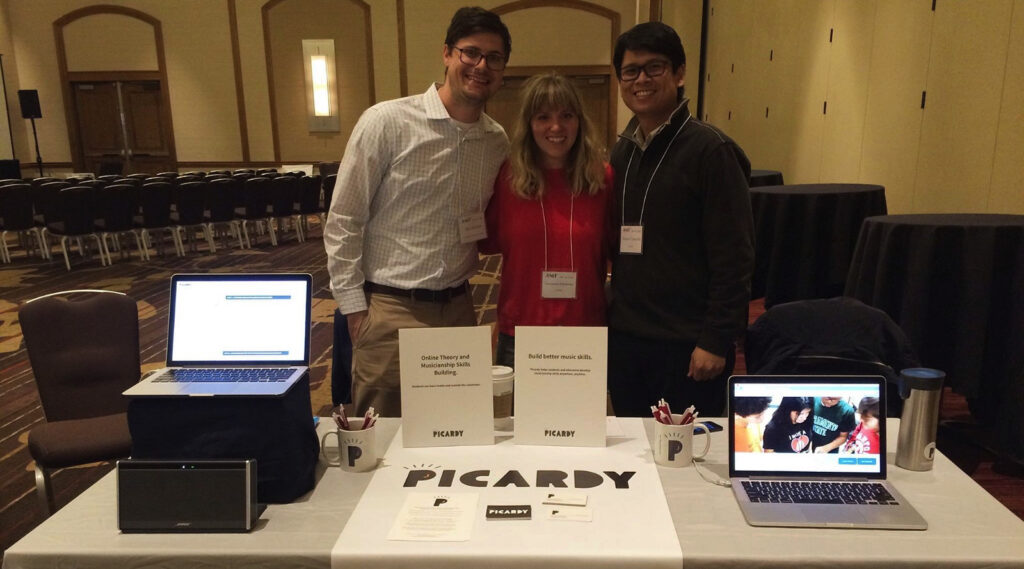By Alex Newton

Attending the annual Society for Music Theory meeting in St. Louis was a new experience for me. I don’t mean that it was my first conference. No, that was back in Nashville in 2008 where I was hoping to meet and network with some faculty and graduate students leading up to graduate school applications. Nor was it the first time I presented my own work, a terrifying yet in the end a very rewarding experience.
Instead, this year would be different on two fronts.
First, I was officially no longer a student, but a professional and second, I would be not only attending as a music theorist but as a spokesperson for the Picardy team at our table. Both of these factors changed my initial perspective of SMT this year. I found myself particularly drawn to issues of pedagogy. Not that pedagogy didn’t matter before, but with my work with Picardy it has become a big part of my professional life and in working in an online environment I find myself asking questions and tackling problems I never had to in the classroom. Below are a couple things I noticed this year in St. Louis:
1) Music theorists wear many hats, but teacher is always a fundamental one.
A music theorist is a researcher, a pedagogue, a mentor, an administrator, and often several other things. When you are a student finishing your dissertation (and, in my case not teaching at the same time) your primary goal is research and last year when I attended SMT I focused on finding people doing similar work to mine. Conferences are supposed to be the sort of places that scholars come together to share those ideas.
But those ideas can be rooted in places other than set theory analyses or formal graphs of sonatas and SMT has a lot to offer on several other fronts. Pedagogy, to me, stood out more than any others this year. The most well attended panel I saw (aside from the keynote) was a pedagogy panel responding to the recent “CMS Manifesto,” which caused a stir in the music theory community. Many of the presenters showed that, contrary to the claim of the report, many music theorists work hard to promote composition, improvisation, popular music, world music, and music technology in their classrooms. I also noticed a foregrounded pedagogical discussion in Kofi Agawu’s keynote address. The talk seemed most concerned with what we can learn from African music.
2) Music theorists are interested in technology.
There is a caricature of a music theorist sitting in a small office or room filled with only a pencil, a piano, and scores upon scores of music. While the average theorist might interact with music by scribbling ideas and circling notes on a page or plunking out a particular passage on a piano, the image also suggests antiquation and seclusion. In practice, I found at SMT quite the opposite. Instead, I found theorists passionate about finding new ways to connect with their students.
Follow Alex on Twitter at @AlexMNewton.